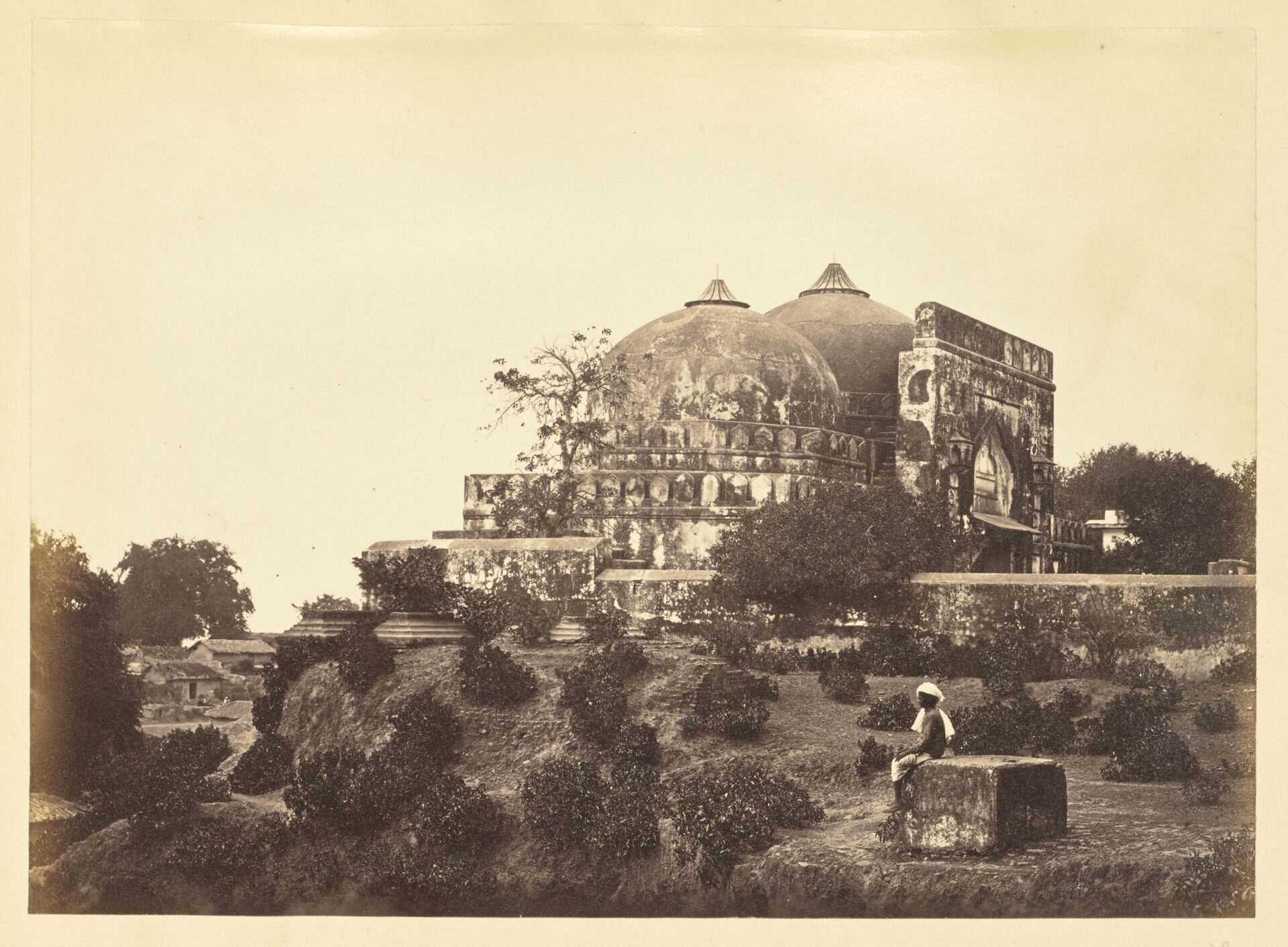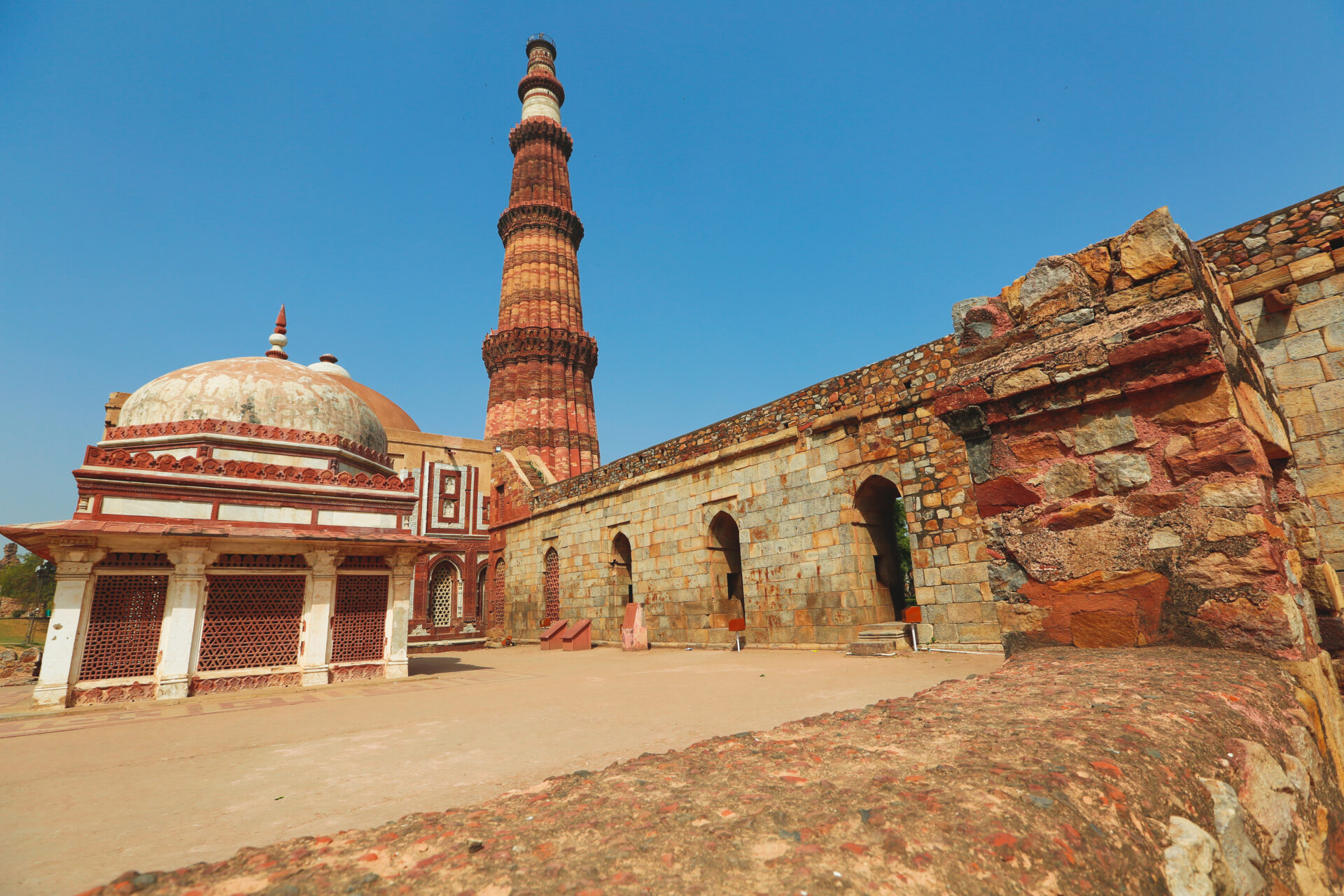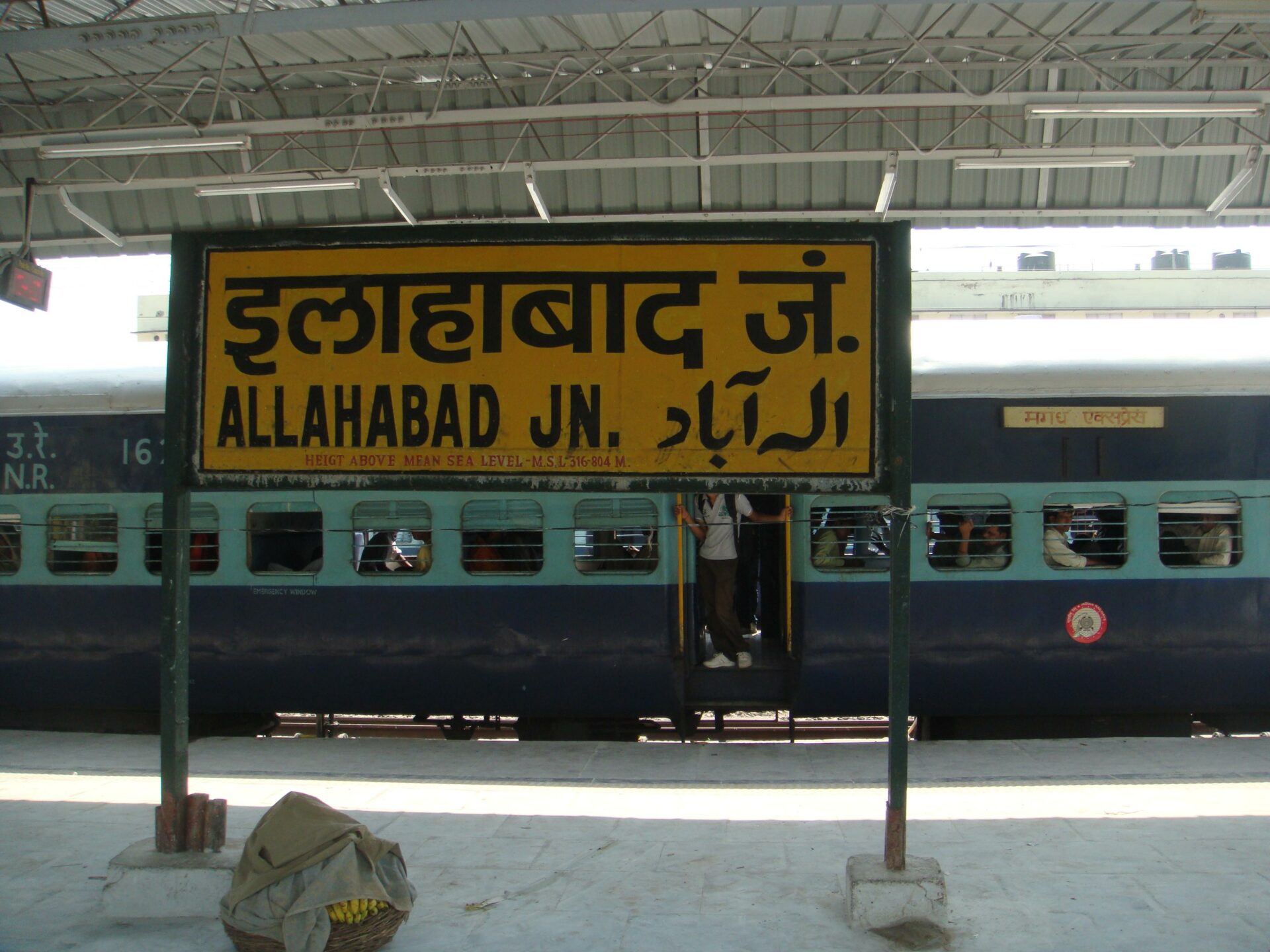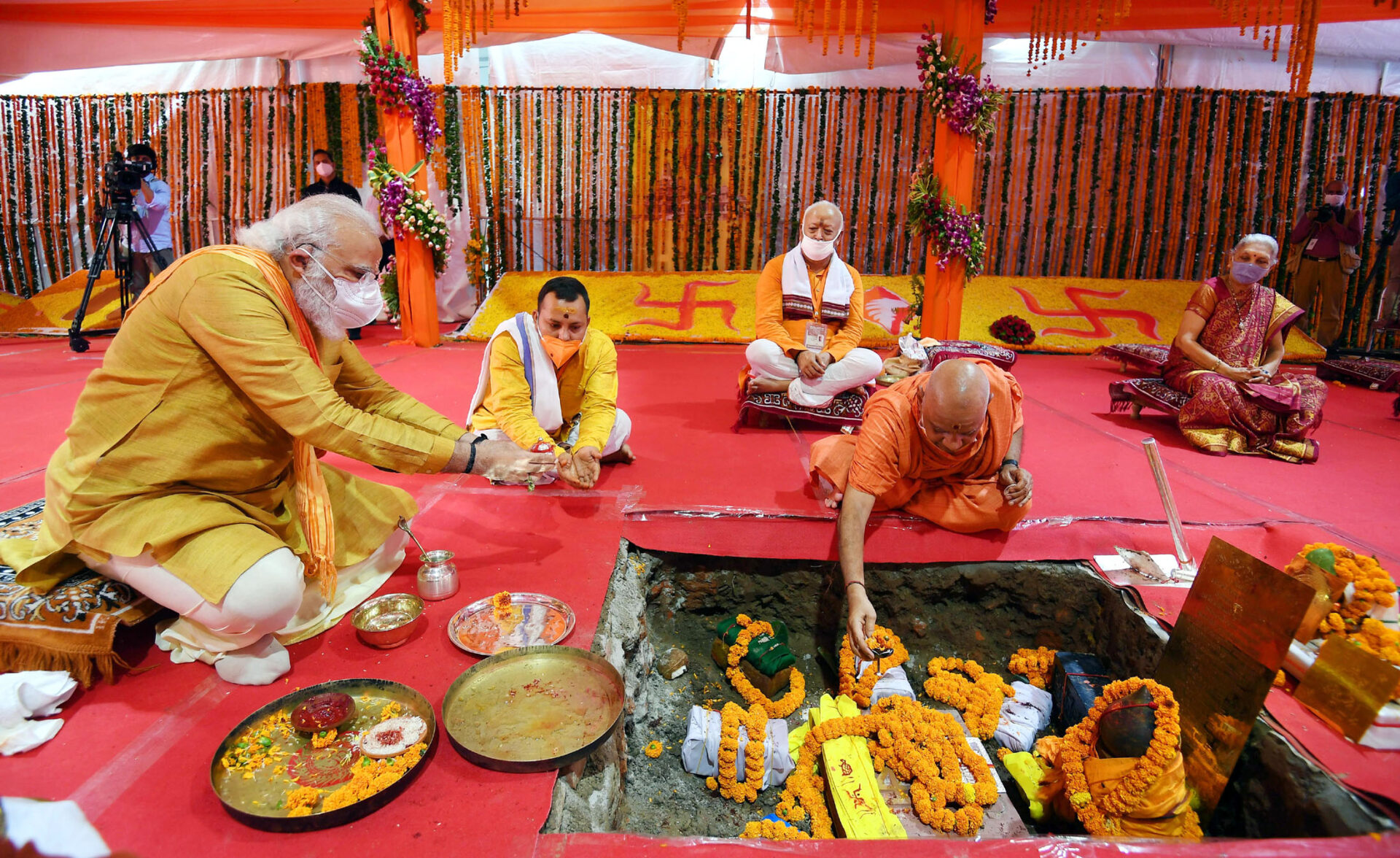In May 2022, a court-mandated survey of the Gyanvapi Mosque in Varanasi, Uttar Pradesh, in northern India, yielded findings of the supposed presence of a former Shiva temple lying buried under the mosque. This bolstered the claims of the group of Hindu petitioners baying for access to the mosque, encouraging them to even try to storm in and worship the Shiva deity.
This example of an attempted Hindu takeover of Muslim places of worship is no flash in the pan. For years now, the Hindu right-wing has weaponised heritage to prove India’s Hindu origins and establish its corresponding markers in public space. The claim is that these structures are impositions by foreign invaders, mostly the Mughal Dynasty that flourished between the 16th and 18th centuries, prior to British rule. In attempts to weed out Islamic symbols, the legitimacy of mosques and other Islamic structures is being challenged, and calls for them to be razed to the ground are reaching a fevered pitch. Whether these sites and structures are Hindu or Muslim is beside the point. It is the wielding of heritage as a tool by the majoritarian government and its cronies to systematically purge public space of Islam that chills. Their political agenda is to write Muslims out of Indian history.
Hindu-Muslim disunity has deep historical roots. The Moroccan explorer Ibn Battuta points to riots between the two communities as far back as in the 14th century. Disharmony accelerated in the 19th century as Hindu and Muslim revivalism burgeoned and urbanisation proceeded apace. The British colonial government with their “divide and rule” policy has also been ascribed blame for whipping up tensions. In the 1909 local elections, they granted Muslims separate electorates in the hope of dividing votes, and in 1947 India had to eventually be partitioned on religious lines, Pakistan becoming home to an overwhelming Muslim majority.
While the idea that “Muslims are foreigners” has been propounded on and off right since Indian independence in 1947, it has been whipped up with far greater enthusiasm since 2014, when the Bharatiya Janata Party (BJP) came to power. Barely a month after sweeping the pools, Prime Minister Modi declared that India had been suffering from a “slave mentality” for the last 1200 years. The mathematics was puzzling, after all, the British had washed up on Indian shores all of 200 years previously. The PM was, in fact, referring to the Muslim dynasties that preceded the British, starting as early as the 7th century. By referring to them as a blot on an otherwise neat Hindu timeline, Modi, in one fell swoop, alienated Muslims in India and equated India to Hindu.
The most salient case of Hindu nation-building through the war on Islamic heritage is the Ram temple-Babri Mosque dispute in Ayodhya that came to a head in 2019. Since as early as 1959, Hindu groups have claimed that the land on which the Babri Mosque was built was the birthplace of the Hindu lord, Ram. In 1992, a Hindu mob, spurred on by BJP leaders, stormed the mosque and reduced it to rubble, sparking a case that after being dragged through the legal machinery of the country finally came to rest nearly 30 years later. In 2019, the verdict awarded the disputed land to a trust set up to build a temple. And in 2020, the Prime Minister personally laid the foundation stone for the new temple.
The Ayodhya case is one of many attempts to appropriate or delegitimise Muslim spaces. In Delhi, the World Heritage-inscribed Qutub Minaret complex is under the scanner. The site, consisting of minarets (most notably the Qutub Minaret), mosques, and other structures, was established by the first ruler of the Delhi Sultanate, an Islamic empire from the 13th century. Several Hindu outfits are clamouring for the restoration of the twenty seven temples that were supposed to have been destroyed to make way for the Qutub complex. In Mathura, Uttar Pradesh, the Shree Krishna Janmabhoomi Trust is trying to wrangle ownership of the Shahi Idgah Mosque, claiming that the Hindu lord, Krishna was born there. And down south in Mangalore, Karnataka, the far right-wing Vishwa Hindu Parishad of VHP (World Hindu Council) is demanding that the Archaeological Survey of India (ASI) conduct a probe into the Gurupora Hobli mosque, to fish out temple remains. One BJP leader even claimed that over 50,000 mosques in India are erstwhile temples.
Even the Taj Mahal has not been spared, what with the VHP (World Hindu Council) tearing down a steel gate on its premises in 2018, on the pretext of it blocking the passage to a 400-year-old Shiva temple and a BJP leader more recently asking for 20 of its rooms to be laid bare, so that its origins as a Shiva temple named Tejo Mahalaya might be exposed. Right-wing nationalists have claimed that the Taj was formerly a Hindu temple, that fell prey to conversion by the Mughals and was part of the palace of a Hindu king. In vigorous attempts to rewrite history, the Chief Minister of the state of Uttar Pradesh and member of the BJP, even asserted that the Taj does not reflect Indian culture, and in 2017, in an egregious act, his tourism department went so far as to exorcise its mention from the state brochure of key tourist destinations.
While these schemes have intensified in the last few years, the writing has been on the wall for a long time. Legal disputes over the Gyanvapi Mosque date back to 1991. And Somnath Temple in Gujarat is an early example of a temple being built on the ruins of a mosque that had been built on the supposed ruins of a temple. The temple was built in 1951, in the immediate aftermath of India’s independence, much to the chagrin of the then Prime Minister Nehru, who had bemoaned “Hindu revivalism” in secular India. More recently, in the bloody pogrom of 2002 in Gujarat, a staggering 230 Muslim structures were reduced to rubble or defaced by Hindu mobs. There had been plans, also in Gujarat, to tear down two Archaeological Survey of India-protected mosques–both over 400 years old–for road expansion in 2006-07. During both these cases, Modi was Chief Minister of the state.
What are now brazen calls to wipe out Muslim built heritage began with creeping de-Muslimisation and subsequent Hindu-isation of public space. Begun insidiously after the BJP came to power in 2014, it was largely operationalised by swapping Muslim-sounding or Mughal names of streets, landmarks, towns, and other institutions with those of prominent Hindu–or Hindutva–friendly figures or places. So Mughalsarai railway junction in Delhi became Pandit Deen Dayal Upadhyaya Junction in 2018; Allahabad city became Prayagraj in 2018; Feroz Shah Kotla Stadium in Delhi became Arun Jaitley Stadium in 2019. The new namesakes evinced an unmistakable pattern: Pandit Deen Dayal Upadhyaya was a Hindu ideologue and “source of ideological guidance and moral inspiration for the BJP since its inception”; Prayagraj is a reference to the Hindu holy city of Prayag; and Arun Jaitley was a much-loved BJP cabinet minister.
These are but a handful of examples of sites that have been or are in danger of being Hindu-washed. The rather plump list goes on: Faizabad is now Ayodhya, after the ancient holy city of Lord Ram; Muzaffarnagar could become Lakshmi Nagar after the Hindu goddess; Ahmedabad could turn Karnavati, after a Hindu dynastic leader; and the names of the cities, Hyderabad and Aurangabad, are also in danger of being tinkered with. The agenda is clear, even in the renaming of Delhi’s Aurangzeb Road to Dr A P J Abdul Kalam Road after the former (Muslim) president: Aurangzeb has been denigrated as a cruel Mughal invader, while Kalam is seen to have been the ‘right’ kind of Muslim – pliant and kow-towing to the BJP. The country’s 75th anniversary of independence in 2022 provided even further impetus for the name-changing frenzy: celebrations include renaming the presidential Mughal Gardens to Amrit Udyan and calls for ridding five streets in Delhi of their Moghul monikers.
The current political agenda is to assert a grand narrative of age-old Hindu dominance. But India-equal-to-Hindu is a construct. As Apoorvanand has noted, there was never an unblemished pre-Muslim past. This conflict between myth and reality draws attention to the definition of heritage itself.
Increasingly, scholars encourage an understanding of heritage as not simply historical architecture or physical space, but as a shifting process of active selection and interpretation of the past in the present . As Lowenthal suggests, the activity of constructing heritage involves a flight from truth, so scrounging for supposedly truthful and scientific material evidence goes against the very nature and purpose of the exercise. Fabrication and muddling of historical fact are crucial for nation-building and the Hindu right-wing’s machinations are a textbook case of this.
But their task is not straight-forward, for, nation-building is scuppered by heterogeneity. The choosing of what becomes heritage lacks “congruity” and “consensus”: it is inherently dissonant. Dissonance is also unavoidable, for, as one group stakes claim, another will perforce be disinherited. Powerful elites who helm the nation-building project hold undue sway, as they dip into a supposed hallowed past to assert their dominance in the present.
In service of the myth of a Hindu golden age, the Hindu right-wing is contorting historical facts and attempting to cleanse the built environment of Muslim heritage. Their meddlesomeness is proof of the pudding that heritage is more than simply brick and mortar. It is about the selection and use of these for political purposes. In this scheme then, architecture–by way of claims to mosques, and public space–through its renaming, are merely convenient props that hold up the cherry-picked narrative.






